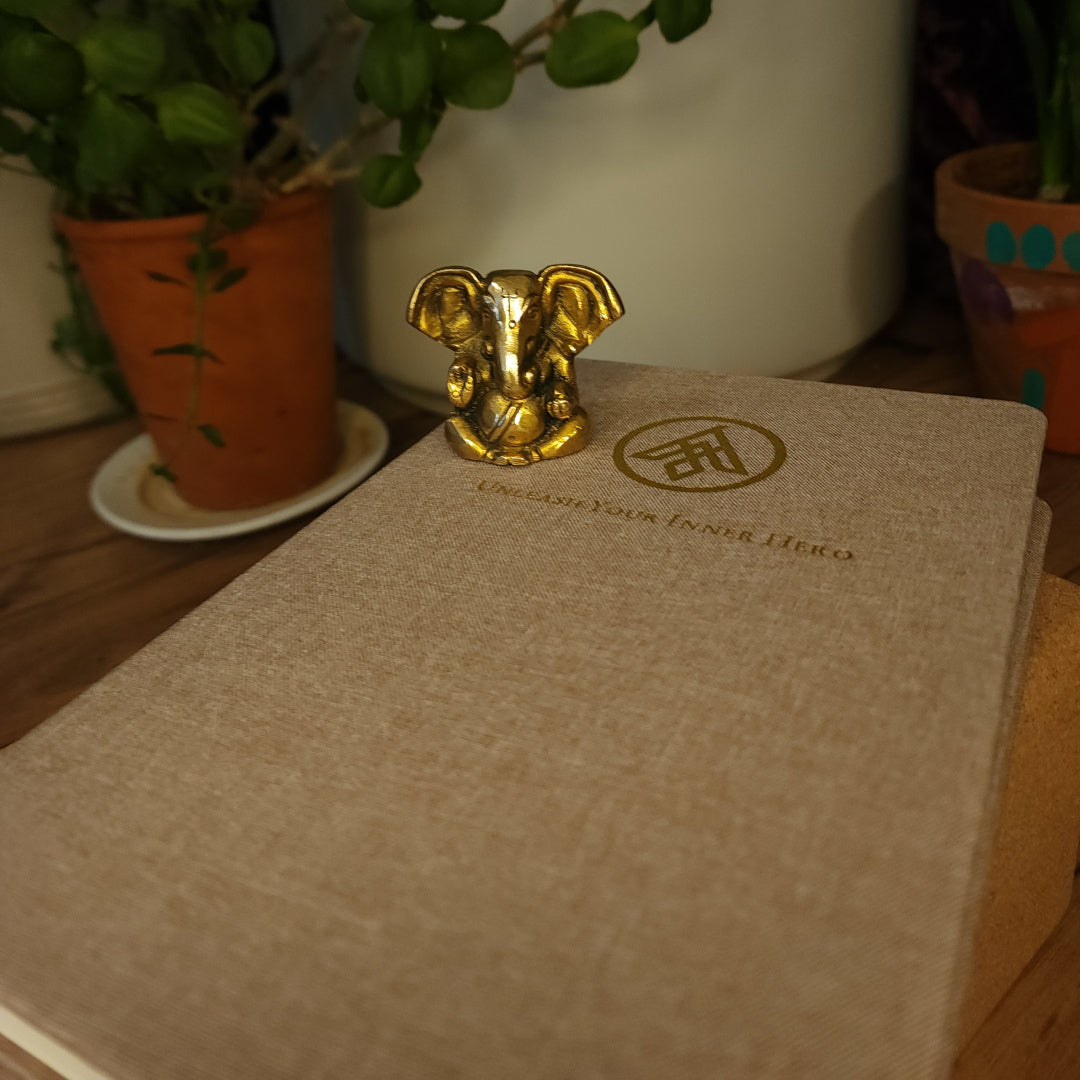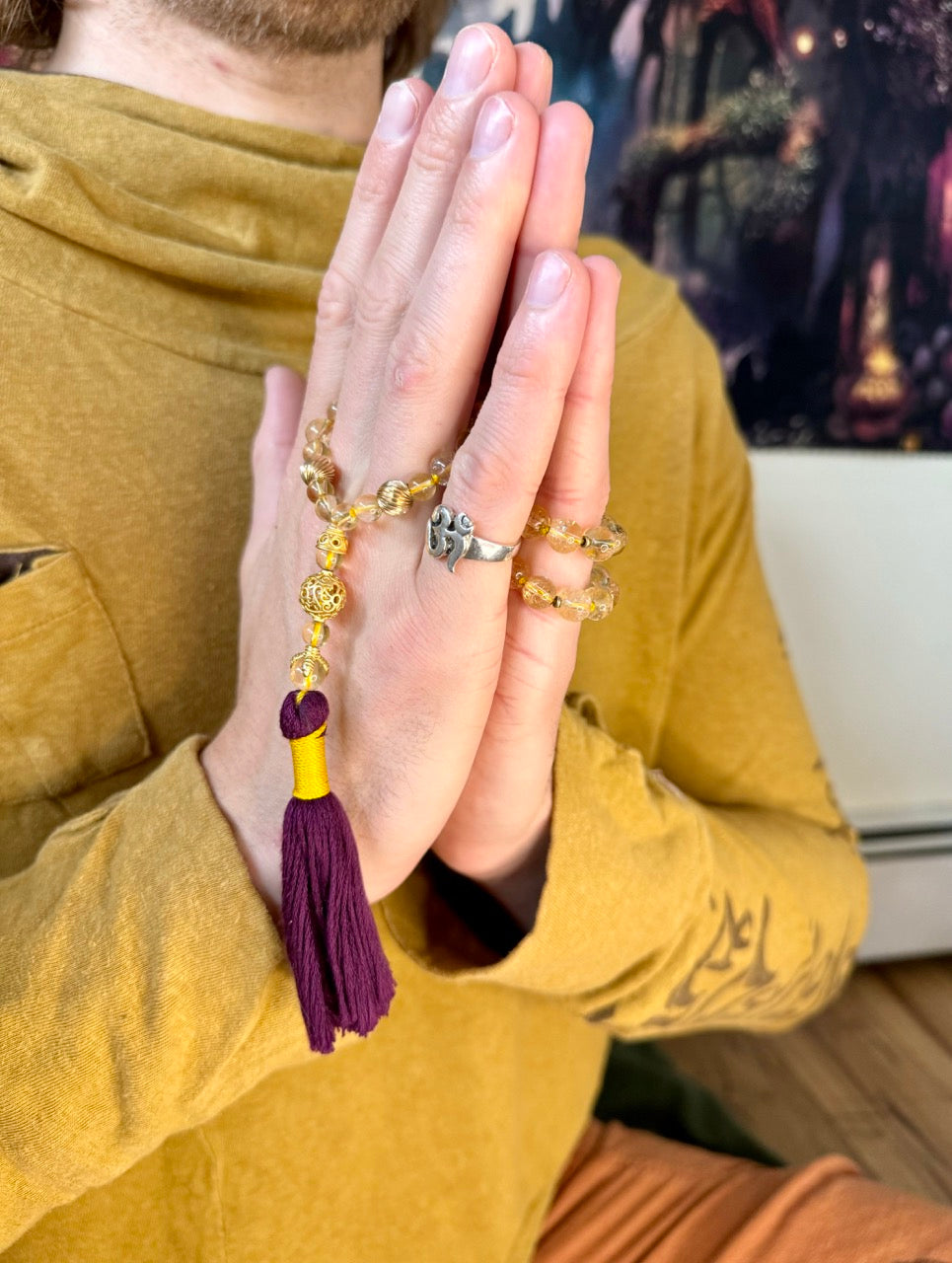Om Mani Padme Hum Mantra
The Om Mani Padme Hum mantra is one of the most well-known and revered mantras in Tibetan Buddhism. This mantra invokes the blessings of Chenrezig (Avalokiteshvara), the embodiment of compassion.
It is widely used in meditation practices to cultivate compassion, alleviate suffering, and develop a connection to the universal qualities of wisdom and compassion.
English Name
English Spelling: Om Mani Padme Hum
Transliteration: Oṃ Maṇi Padme Hūṃ
Sanskrit Name
Sanskrit: ॐ मणि पद्मे हूँ
Phonetic Spelling: Om Ma-ni Pad-me Hum
Translation: "Hail to the jewel in the lotus"
Mantra Breakdown
Oṃ: The sacred syllable representing the essence of the universe.
Maṇi: Jewel, symbolizing the intention to become enlightened, compassionate, and loving.
Padme: Lotus, symbolizing wisdom and the unfolding of the true nature of reality.
Hūṃ: Represents the indivisibility of wisdom and compassion.
Benefits of Chanting Om Mani Padme Hum Mantra
- Compassion
- Wisdom
- Inner Peace
- Spiritual Connection
How to Chant Om Mani Padme Hum Mantra
- Find a Quiet Space: Choose a peaceful environment free from distractions.
- Sit Comfortably: Sit in a comfortable posture with your spine straight.
- Close Your Eyes: Gently close your eyes and take a few deep breaths.
- Recite the Mantra: Slowly and mindfully chant the mantra, focusing on its meaning and vibration.
- Repeat: Repeat the mantra as many times as you feel comfortable, allowing its energy to permeate your being.
Align your mind and spirit with the power of intention using our Mantra Journal.Deepen Your Mantra Practice
Integration of Om Mani Padme Hum Mantra
Integrating Om Mani Padme Hum mantra into your meditation practice can deepen your connection to compassion and wisdom, connecting you to the diamond within the lotus. Here are some ways to integrate this mantra:
Mantra Meditation: Use Om Mani Padme Hum mantra as the focal point of your meditation.
Mindful Breathing: While practicing pranayama (breath control), silently chant the mantra with each inhale and exhale.
Walking Meditation: Chant the mantra while walking mindfully.
Daily Practice: Implement the mantra as a daily practice whether you chant it on a mala, as you go about your errands, or if you sit down in a mantra meditation.
Kirtan (Group Chanting): Participate in or organize group chanting sessions or kirtan.
By weaving Om Mani Padme Hum mantra into your meditation or mala practice, you can cultivate a deeper connection to its compassionate, wise, and self-realization energy.








